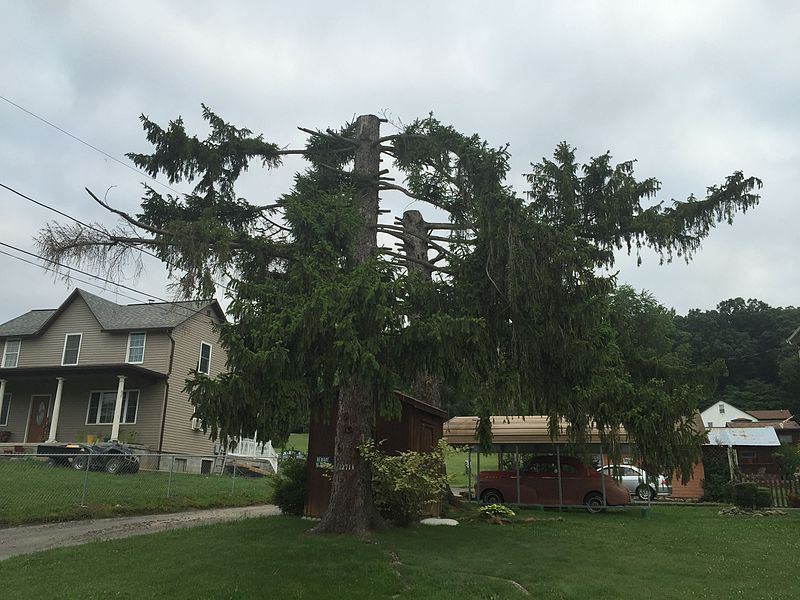Written by Admin and published on https://www.hellis.biz/.
If your landscape is being overrun with tall, fast-growing trees, you may feel compelled to cut off the top.
Known as tree topping, it’s become a common solution for homeowners and business owners struggling to control their landscape.
While tree topping may sound effective, you should think twice before proceeding with it. Tree Topping vs Pruning: What’s the Difference?
Upon reading the definition of tree topping, many people assume that tree topping is the same as pruning. After all, both tree topping and pruning involve cutting trees to remove some of their branches.
Why Topping Trees is a Bad Idea
Introduction
Topping trees is a widespread practice that appears to offer a short term solution to a perceived problem. In reality, it is detrimental to the health of the tree and creates problems in the long term. The following explains why topping trees is a bad idea.
What is Topping?
Topping is ‘the indiscriminate cutting back of tree branches to stubs or lateral branches that are not large enough to assume the lead role’ (International Society of Arboriculture).
The most common reasons given for topping are:
- to reduce the size of a tree
- to allow more light into a property
- to reduce the number of leaves that fall in autumn
Homeowners sometimes feel that their trees have become too big and worry that they may pose a risk.
The irony is that topping is carried out with the intention of reducing the tree’s height in order to either make it safer or permit more light into the property, but it will in fact have the opposite effect and both increase the likelihood of failure and obscure more light.
How Topping Creates Hazards
After topping, multiple shoots develop within the end 20-25cm of the remaining branches.
Normal branches develop in a ‘socket’ of overlapping wood tissues but these new shoots are only anchored in the surface layers of their new parent branches. These new shoots grow very rapidly as the tree attempts to restore the balance between the root system and the crown.
The end result is that, in just a few years, the tree is back to the size it was, before it was topped; only it will have an increased crown density and the new shoots will be prone to failing in strong winds.
Why Topping Creates Physiological Stress
Removing the trees branches removes the trees leaves and removing the trees leaves removes the trees ability to produce food. Removing the ability to produce food places the tree under severe physiological stress.
- A tree under stress is more vulnerable to attack by pests and diseases. Pests by themselves are seldom responsible for the death of a tree; however, in a weakened condition the tree may fail as a consequence.
- Large, open pruning wounds expose the wood to decay and the tree may lack sufficient resources to chemically “defend” the wounds against invasion by fungi.
Topping Causes Decay
The preferred location to make a pruning cut is just beyond the branch collar at the branch’s point of attachment; please see ‘Natural Target Pruning – How and Where to Remove a Branch’. The tree is biologically equipped to close such a wound provided the tree is healthy enough and the wound is not too large.
Cuts made along a limb, between lateral branches, create stubs with wounds that the tree may not be able to close. The exposed wood tissues begin to decay.
Normally a tree will “wall off” or compartmentalise the decaying tissues. But few trees can defend the multiple severe wounds caused by topping. The decay organisms are given a free path to move down through the branches.
The Cost of Topping
The initial cost of topping a tree is the sum of money paid to the contractor for doing the work. The subsequent costs may include:
- If the tree survives, it will either need to be reduced again in a few years time or resulting storm damage from shoot failure will have to be cleaned up.
- If the tree dies it will have to be removed.
- Topped trees are prone to breaking and can be Topping is not considered to be an acceptable pruning practice therefore any damage caused by branch failure, from a topped tree, may lead to a finding of negligence in a court of law.
- Healthy, well maintained trees can add 5 -18% to the value of a Damaged and possibly diseased trees are a financial liability.
Original post https://www.megainteresting.com/nature/article/how-trees-survive-and-thrive-after-forest-fires-741579248339.


